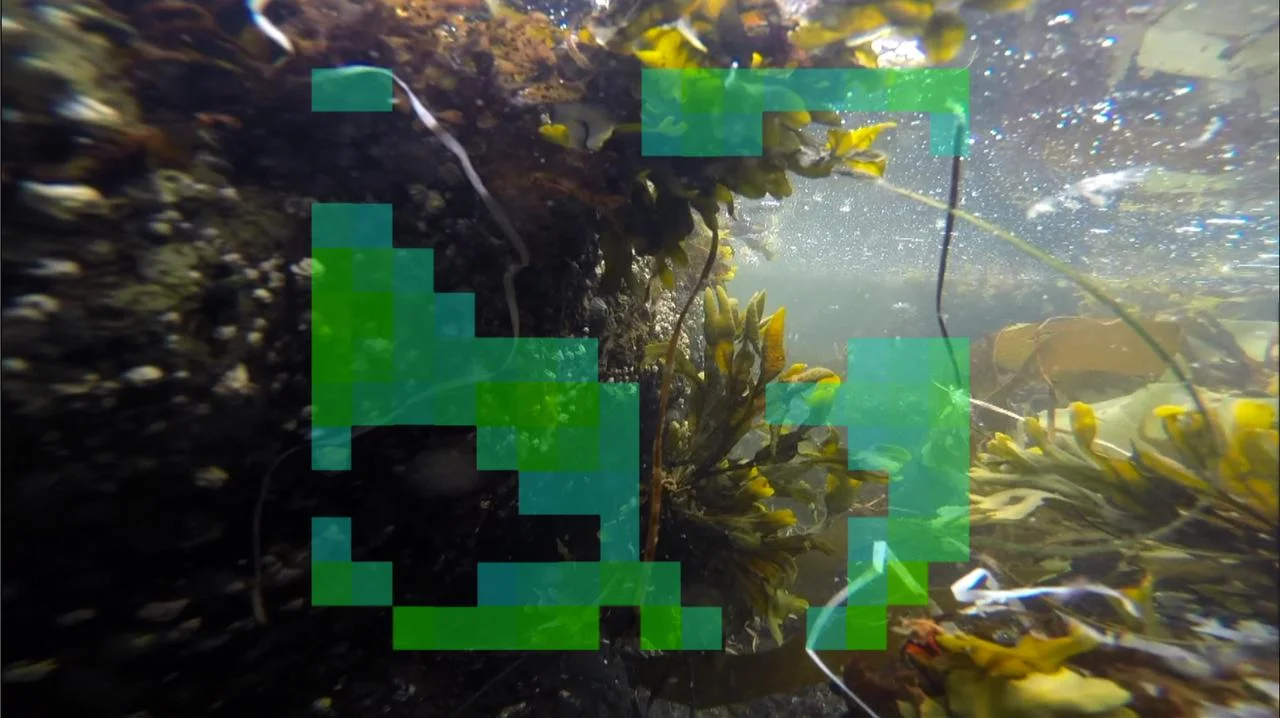Trace Evidence (still), 2016, Susan Schuppli
Review
The Nuclear Culture Source Book
First published by Art Monthly, March 2017
Edited by Ele Carpenter, Black Dog Books, 2017
During a presentation of new film work for the Bad Vibes Club at Open School East in October last year, the artist Susan Schuppli outlined her appropriation of the phrase ‘material witness’, a legal term conventionally used to imply any person bearing information that could alter the result of a judicial trial. In Schuppli’s thinking, the term had been reoriented towards the non-human in an attempt to register the ‘trace evidence’ borne by matter: how the agents involved in an oil slick or a radiation leak, for example, might forensically testify to changes in state, allowing for measures of accountability to be set in motion.
Appropriately, the presentation was delivered a few days prior to a significant ‘leak’ of information from Whitehall, disclosing the previously hidden costs UK taxpayers would face for the storage of radioactive waste produced by Hinkley Point C, the China-backed, French-run nuclear power station given the recent £18bn go-ahead by Theresa May. Amid such subterfuge, Schuppli’s ideas drove to the heart of what seemed to be the main problem facing any emergent nuclear consciousness: visibility. How could the unseen physical and cultural processes of nuclear fission be made legible, comprehensible and debatable in a popular sense? Furthermore, what role might artists play in such a project?
The Nuclear Culture Source Book edited by curator Ele Carpenter is a far-reaching survey that provides an opportunity to take stock of how a tactical aesthetics might be employed in opening debate around the nuclear and its myriad uses and wretched side effects. Published to coincide with the ‘Perpetual Uncertainty’ exhibition at Umeå University’s Bildmuseet in northern Sweden, the book functions equally well as a catalytic resource for further study and for practice, providing a formidable range of contributors whose words actions and images help to chart this emergent terrain. Yes, there is the obligatory essay by Timothy Morton, but interviews with members of the British Ministry of Defence Submarine Dismantling Project Advisory Group (SDP-AG) and bold tracts by Gabrielle Hecht and Jahnavi Phalkey (considering ‘nuclearity’ as it passes between developed and undeveloped worlds, and physics research as a gift economy, respectively) ensure that this volume treads essential new ground.
It bears stating that any engagement with the nuclear requires a fundamental reconfiguration of our perceptions of time and vulnerability, a task Carpenter addresses in a series of chapters on the nuclear anthropocene, radiological inheritance and nuclear materiality. ‘Radiation knows no boundaries’, she writes in her chapter on ‘radioactive non-sites’, and many of the featured projects attest to the hazardous porosity of a world subject to the contaminant resonances of radioactive isotopes.
Yelena Popova’s Mutatis Mutandis: Birds In The Radioactive Biocenosis, 2010, a series of ornithological watercolours, draws inspiration from the writings of Russian biologist Zhores Medvedev to imagine the plethora of transfigured migrational wildlife that could result from a disaster such as the Kysthtym explosion in the Soviet Union in 1957, while Eiko Honda’s deeply researched essay on ‘atomic subjectivity’ extends the concerns of Nina Fischer and Maroan El Sani’s project I Live In Fear – Record of A Living Being After March 11, 2013, in which refugees of the Fukushima Daiichi meltdown were invited to reflect on their own experiences through the collective viewing and discussion of Akira Kurosawa’s cinematic evocation of nuclear anxiety of the same name produced in 1955. Honda’s essay charts the etymological and ideological history of the term ‘individual’ in the Japanese language and, as such, extrapolates a fascinating social history in which communal obligation is set against personal freedom through a postwar period sensitive to the nuclear-imaginary and during which government transparency regarding the safety of nuclear infrastructure has been lamentable.
While some artists have rather heroically engaged the ‘deep-time’ temporalities of the nuclear by exhibiting directly within the Fukushima exclusion zone – exemplified here by Japanese collective Chim-Pom’s 2015 Don’t Follow The Wind project in which artists were invited to expose their work to the contingencies of contamination in a poignant inversion of Robert Smithson’s site-non-site dynamics – I found the understated backyard photographs of Shuji Akagi’s Fukushima Traces, 2013, or the interweaving of family history, scientific discovery and natural catastrophe written and illustrated by Erika Kobayashi to be more interesting in the way they resisted the spectacular trappings of the nuclear-sublime in favour of a personable, honed simplicity that foregrounds the almost crushing banality of radiological time. As popular debate in the UK loops around the ill-thought issues of Trident rearmament and non-sustainable energy provision, Carpenter’s necessarily untimely book provides some essential tools for thinking on less proximate scales.

